-
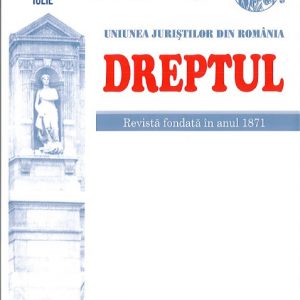 This article explores the concept of usucapion as envisioned by the new Civil Code of Romania. In the current regulation, the usucapion retains its status as both an originary mode of acquiring property and other real rights and a particularly important effect of possession. Unlike the former regulation, usucapion is now applicable not only in real estate matters, but also to moveable goods. With this new regulation, the lawmaker also had in mind the land registry system, as established by Law No 7/1996. In this regard, the provisions applicable to Transylvania, Banat and Bucovina in respect to the distinction between the two forms of real estate usucapion, namely tabular and extra-tabular, are extended for the entire country, with some changes. Therefore, our study sets forth a novel perspective on this subject and at the same time aims to present its findings in a concise, albeit exhaustive manner.
This article explores the concept of usucapion as envisioned by the new Civil Code of Romania. In the current regulation, the usucapion retains its status as both an originary mode of acquiring property and other real rights and a particularly important effect of possession. Unlike the former regulation, usucapion is now applicable not only in real estate matters, but also to moveable goods. With this new regulation, the lawmaker also had in mind the land registry system, as established by Law No 7/1996. In this regard, the provisions applicable to Transylvania, Banat and Bucovina in respect to the distinction between the two forms of real estate usucapion, namely tabular and extra-tabular, are extended for the entire country, with some changes. Therefore, our study sets forth a novel perspective on this subject and at the same time aims to present its findings in a concise, albeit exhaustive manner. -
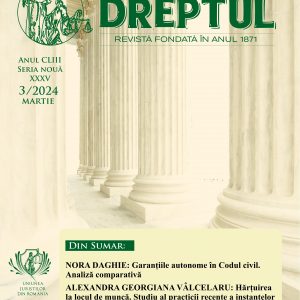
-
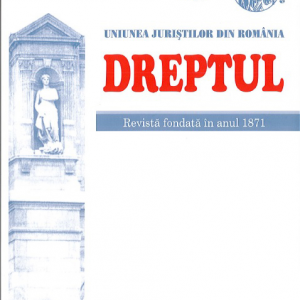 The present study aims to present a series of case law decisions in which the role and the activity of the central bank has proved to be insufficiently considered in depth by the Romanian courts. The application thereby, as regards the National Bank of Romania, of some legal provisions addressed to commercial banks, confusing the administrative review on the acts of the central bank with the administrative jurisdiction, overlapping restraints of the constitutional frameworks in which the National Bank has activated throughout its history, inconsistencies with the vision accepted at European level regarding the attributions and independence of the central banks are widely treated in an attempt to clarify the specific position that the central bank holds in the Romanian institutional landscape. There were presented some solutions from the judicial practice that highlight the need for doctrinal clarifications regarding the nature of the activity of the central bank, including from the European perspective. The importance of knowing them is determined by the significant effects that the correct or incorrect application of the norms and principles regarding the central bank can produce not only at the level of the administrative law, but also at criminal or economic level.
The present study aims to present a series of case law decisions in which the role and the activity of the central bank has proved to be insufficiently considered in depth by the Romanian courts. The application thereby, as regards the National Bank of Romania, of some legal provisions addressed to commercial banks, confusing the administrative review on the acts of the central bank with the administrative jurisdiction, overlapping restraints of the constitutional frameworks in which the National Bank has activated throughout its history, inconsistencies with the vision accepted at European level regarding the attributions and independence of the central banks are widely treated in an attempt to clarify the specific position that the central bank holds in the Romanian institutional landscape. There were presented some solutions from the judicial practice that highlight the need for doctrinal clarifications regarding the nature of the activity of the central bank, including from the European perspective. The importance of knowing them is determined by the significant effects that the correct or incorrect application of the norms and principles regarding the central bank can produce not only at the level of the administrative law, but also at criminal or economic level. -
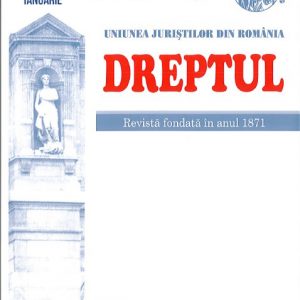 This study includes a critical analysis of the provisions of the new Criminal Procedure Code which provide the producing of proof by expertise in case the technical-scientific fact-finding report is contested. The author has in view the wording of the legal text, which he considers as defective, thus allowing different interpretations. The essence of the discussion is related to the mandatory nature or, on the contrary, to the optional nature of producing the proof of expertise in the mentioned hypothesis.
This study includes a critical analysis of the provisions of the new Criminal Procedure Code which provide the producing of proof by expertise in case the technical-scientific fact-finding report is contested. The author has in view the wording of the legal text, which he considers as defective, thus allowing different interpretations. The essence of the discussion is related to the mandatory nature or, on the contrary, to the optional nature of producing the proof of expertise in the mentioned hypothesis. -
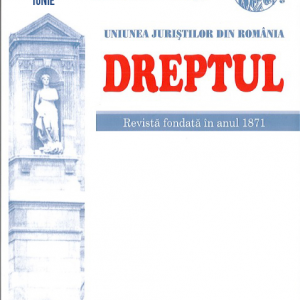 On 10 December 2009, the Parliament of Romania passed the Law no. 381/ 2009 regarding the introduction of the preventive concordat and the ad-hoc mandate. This paper examines the main features of these preventive instruments, designed to be used by the debtor in order to avoid the opening of the insolvency procedure, while restructuring its undertaking and its debts, as to provide satisfaction to the creditors. The author analyzes the categories of debtors that are eligible for such procedures, the role played by the judicial bodies, the proxy and the conciliator and the mechanism of implementation and the effects of the preventive concordat and the ad-hoc mandate. The final part is critically addressing the chances of these preventive instruments to satisfy the interests of both the debtor and the creditors.
On 10 December 2009, the Parliament of Romania passed the Law no. 381/ 2009 regarding the introduction of the preventive concordat and the ad-hoc mandate. This paper examines the main features of these preventive instruments, designed to be used by the debtor in order to avoid the opening of the insolvency procedure, while restructuring its undertaking and its debts, as to provide satisfaction to the creditors. The author analyzes the categories of debtors that are eligible for such procedures, the role played by the judicial bodies, the proxy and the conciliator and the mechanism of implementation and the effects of the preventive concordat and the ad-hoc mandate. The final part is critically addressing the chances of these preventive instruments to satisfy the interests of both the debtor and the creditors. -
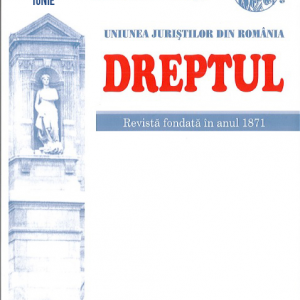 On 10 December 2009, the Parliament of Romania passed the Law no. 381/ 2009 regarding the introduction of the preventive concordat and the ad-hoc mandate. This paper examines the main features of these preventive instruments, designed to be used by the debtor in order to avoid the opening of the insolvency procedure, while restructuring its undertaking and its debts, as to provide satisfaction to the creditors. The author analyzes the categories of debtors that are eligible for such procedures, the role played by the judicial bodies, the proxy and the conciliator and the mechanism of implementation and the effects of the preventive concordat and the ad-hoc mandate. The final part is critically addressing the chances of these preventive instruments to satisfy the interests of both the debtor and the creditors.
On 10 December 2009, the Parliament of Romania passed the Law no. 381/ 2009 regarding the introduction of the preventive concordat and the ad-hoc mandate. This paper examines the main features of these preventive instruments, designed to be used by the debtor in order to avoid the opening of the insolvency procedure, while restructuring its undertaking and its debts, as to provide satisfaction to the creditors. The author analyzes the categories of debtors that are eligible for such procedures, the role played by the judicial bodies, the proxy and the conciliator and the mechanism of implementation and the effects of the preventive concordat and the ad-hoc mandate. The final part is critically addressing the chances of these preventive instruments to satisfy the interests of both the debtor and the creditors. -
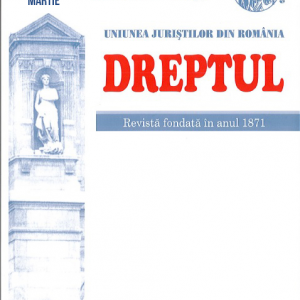 The analysis of the offenses against safety on public roads refers hereinafter to four other offenses (leaving the scene of an accident or changing or erasing evidence of the accident; preventing or hindering traffic on public roads; failure to comply with the tasks regarding the technical inspection or the performance of repairs and the performance of unauthorized works in the public road area), continuing our approach to present to the reader our personal option regarding this set of offenses, presently provided for in an emergency ordinance. Key words: vehicle, car, leaving the scene of an accident, changing the scene of an accident, erasing evidence of the accident, carrying out unauthorized works on the public road, preventing traffic, hindering traffic, poor performance of the technical inspection for vehicles and cars.
The analysis of the offenses against safety on public roads refers hereinafter to four other offenses (leaving the scene of an accident or changing or erasing evidence of the accident; preventing or hindering traffic on public roads; failure to comply with the tasks regarding the technical inspection or the performance of repairs and the performance of unauthorized works in the public road area), continuing our approach to present to the reader our personal option regarding this set of offenses, presently provided for in an emergency ordinance. Key words: vehicle, car, leaving the scene of an accident, changing the scene of an accident, erasing evidence of the accident, carrying out unauthorized works on the public road, preventing traffic, hindering traffic, poor performance of the technical inspection for vehicles and cars. -
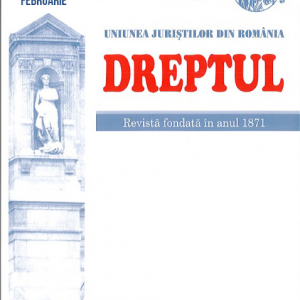 The author’s approach to bring forward offenses against public safety on the roads in terms of the new regulation of the Criminal Code enacted by Law no. 286/2009 stands not only for a scientific approach, but also for a matter of letting those concerned in on the regulation and criminal approach of offenses in this area, against provisions of Government Emergency Ordinance no. 195/2002 on road traffic, regulations characterized by profound differences. These are some, though not all which justify, but renders our approach imperative, which, as one may note, shall prove useful in both teaching and practical terms, if it were to consider, on the one hand, the different legal matter of the two regulations, and, on the other hand, some new normative ways of achieving these facts. For the reader to better and easier understand the criminal indictments’ issue, we set ourselves to consider below separately, in two parts, offenses against public safety on the roads.
The author’s approach to bring forward offenses against public safety on the roads in terms of the new regulation of the Criminal Code enacted by Law no. 286/2009 stands not only for a scientific approach, but also for a matter of letting those concerned in on the regulation and criminal approach of offenses in this area, against provisions of Government Emergency Ordinance no. 195/2002 on road traffic, regulations characterized by profound differences. These are some, though not all which justify, but renders our approach imperative, which, as one may note, shall prove useful in both teaching and practical terms, if it were to consider, on the one hand, the different legal matter of the two regulations, and, on the other hand, some new normative ways of achieving these facts. For the reader to better and easier understand the criminal indictments’ issue, we set ourselves to consider below separately, in two parts, offenses against public safety on the roads. -
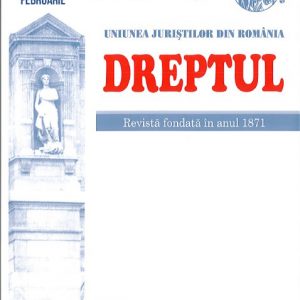 After the adoption and the entry into force of the Law on the administrative disputes No 554/2004, subsequently to the constitutional revision of 2003, the problems of the special administrative jurisdictions are of particular interest, being one of the institutions of the public law meant to ensure the celerity of the settlement of disputes, doubled by the guarantee offered to the litigants, concerning the compliance with the constitutional principle of free access to justice, the right to a fair trial and to the settlement of cases within a reasonable time. In this context, the study intends to make an analysis of the constitutionality of the special administrative jurisdictions regulated by the Law No 554/2004 and in some special normative acts, adopted after the constitutional revision from 2003, in relation to the provisions of Article 21 (4) of the Romanian Constitution revised and republished.
After the adoption and the entry into force of the Law on the administrative disputes No 554/2004, subsequently to the constitutional revision of 2003, the problems of the special administrative jurisdictions are of particular interest, being one of the institutions of the public law meant to ensure the celerity of the settlement of disputes, doubled by the guarantee offered to the litigants, concerning the compliance with the constitutional principle of free access to justice, the right to a fair trial and to the settlement of cases within a reasonable time. In this context, the study intends to make an analysis of the constitutionality of the special administrative jurisdictions regulated by the Law No 554/2004 and in some special normative acts, adopted after the constitutional revision from 2003, in relation to the provisions of Article 21 (4) of the Romanian Constitution revised and republished. -
 This paper analyzes the principle of mutual recognition as a method of legal integration specific to EU law but also, in the form of Full Faith and Credit and Extradition Clauses, in the U.S. Constitution and law. The article presents a brief historical perspective on this principle, of its roots in Anglo-Saxon law and its direct continuity in U.S. law, but also of taking over, through legal hybridization, in combination with the harmonization method, in EU law. The work analyses: the function of legal integration of the principle, as an essential component of both American federalism and the EU legal order, its fundamental characteristics and its conditions of application and the topic of Interstate Extradition Clause versus European Arrest Warrant. The Articles of Confederation, the U.S. Constitution, federal laws, uniform laws, the case-law of the U.S. Supreme Court and other U.S. courts, altogether with the EU fundamental treaties, the legal acts of the European Union and the jurisprudence of the Court of Justice of European Union were considered. Numerous similarities have emerged from the comparative analysis, but also some differences, coming from the different paradigms of American federalism and, respectively, of the EU legal order.
This paper analyzes the principle of mutual recognition as a method of legal integration specific to EU law but also, in the form of Full Faith and Credit and Extradition Clauses, in the U.S. Constitution and law. The article presents a brief historical perspective on this principle, of its roots in Anglo-Saxon law and its direct continuity in U.S. law, but also of taking over, through legal hybridization, in combination with the harmonization method, in EU law. The work analyses: the function of legal integration of the principle, as an essential component of both American federalism and the EU legal order, its fundamental characteristics and its conditions of application and the topic of Interstate Extradition Clause versus European Arrest Warrant. The Articles of Confederation, the U.S. Constitution, federal laws, uniform laws, the case-law of the U.S. Supreme Court and other U.S. courts, altogether with the EU fundamental treaties, the legal acts of the European Union and the jurisprudence of the Court of Justice of European Union were considered. Numerous similarities have emerged from the comparative analysis, but also some differences, coming from the different paradigms of American federalism and, respectively, of the EU legal order. -
 Finding the truth in the criminal trial sometimes requires the hearing as witnesses of some persons who know of factual elements referring to the object of the case. In order that the statements given by these persons should not be influenced by factors of pressure exercised on them, the criminal processual legislation has also instituted some special measures to protect the persons that are going to be heard in this capacity in the criminal trial, being also created special categories, such as the category of threatened witness, of vulnerable witness and of witness included in the witness protection program. This study deals with the transitory situation arisen after the entry into force of the new Criminal Procedure Code where the witness, to whom the status of witnesses with protected identity in the criminal prosecution phase has been granted in accordance with the provisions of the previous Criminal Procedure Code, is heard in the trial phase after the entry into force of the new Code.
Finding the truth in the criminal trial sometimes requires the hearing as witnesses of some persons who know of factual elements referring to the object of the case. In order that the statements given by these persons should not be influenced by factors of pressure exercised on them, the criminal processual legislation has also instituted some special measures to protect the persons that are going to be heard in this capacity in the criminal trial, being also created special categories, such as the category of threatened witness, of vulnerable witness and of witness included in the witness protection program. This study deals with the transitory situation arisen after the entry into force of the new Criminal Procedure Code where the witness, to whom the status of witnesses with protected identity in the criminal prosecution phase has been granted in accordance with the provisions of the previous Criminal Procedure Code, is heard in the trial phase after the entry into force of the new Code. -
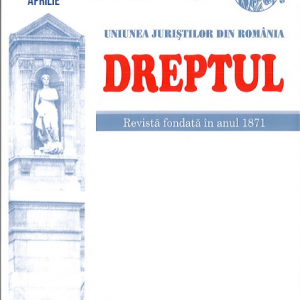 The author points out that article 77 of the new Criminal Code reassessed the circumstances having the ability to emphasize a high degree of social danger of the committed offence and of the offender. Thus, the scope of the circumstance relates to the perpetration of the offence by a person being in a preordinate intoxicated condition which may be generated besides the alcohol, by other psychoactive substances, whose consumption represents a breach of a legal or medical interdiction. The aggravation of the criminal liability has been waived in case the offence is committed for infamous reasons, as the content of this circumstance has never been precisely determined by the doctrine and jurisprudence. A new aggravating circumstance has been introduced consisting in the perpetration of the offence by taking advantage of the obvious vulnerable condition of the injured person due to his/her age, health condition, disability of due to some other grounds, as such a circumstance emphasizes a high level of gravity of the offence, but also a degree of increased injuriousness of the offender. Another novelty item is represented by the waiver to the category of judicial aggravating circumstances, because the imprecise manner in which they are regulated would be situated at the edge limit of the principle of the predictable nature of law.
The author points out that article 77 of the new Criminal Code reassessed the circumstances having the ability to emphasize a high degree of social danger of the committed offence and of the offender. Thus, the scope of the circumstance relates to the perpetration of the offence by a person being in a preordinate intoxicated condition which may be generated besides the alcohol, by other psychoactive substances, whose consumption represents a breach of a legal or medical interdiction. The aggravation of the criminal liability has been waived in case the offence is committed for infamous reasons, as the content of this circumstance has never been precisely determined by the doctrine and jurisprudence. A new aggravating circumstance has been introduced consisting in the perpetration of the offence by taking advantage of the obvious vulnerable condition of the injured person due to his/her age, health condition, disability of due to some other grounds, as such a circumstance emphasizes a high level of gravity of the offence, but also a degree of increased injuriousness of the offender. Another novelty item is represented by the waiver to the category of judicial aggravating circumstances, because the imprecise manner in which they are regulated would be situated at the edge limit of the principle of the predictable nature of law.
